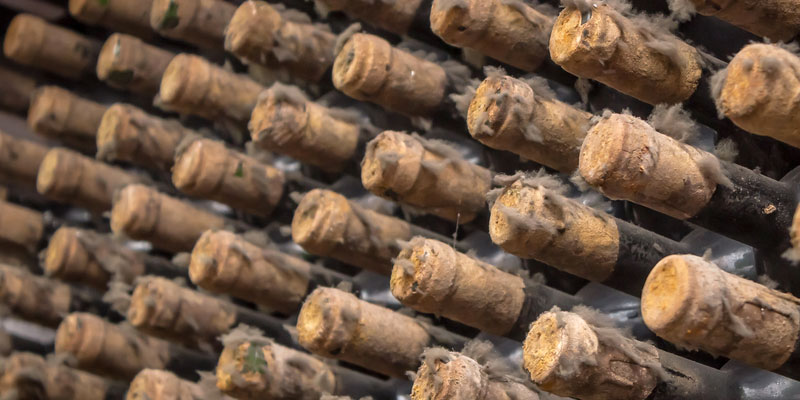It’s time. After months of waiting, the day has come to open that expensive bottle of wine you’ve been saving for way too long. Maybe it’s the holidays, or you just got a promotion. Or maybe you simply avoided getting fired. Regardless, it’s your moment, and you want to top off the day with a bottle of wine you probably can’t afford.
You ceremoniously cut the foil and reveal the cork, look down and notice something a little unsettling: white mold spores dotting the top of the bottle. You’re left with a decision: Is this the good type of mold that means something was done right (like botrytis), or is is the bad type of mold that’s going to take over your home and kill you?
TL;DR, wipe that mold off with glee and drink it.
Mold on the outside of the cork means that the bottle was properly stored. The perfect wine cellar is around 55 degrees and humid as hell. The low temperature keeps the wine from cooking, and the humidity keeps the cork from drying out. A cork is like Spongebob in Sandy’s dome — it needs moisture. Drying into oblivion without humidity, the cork takes up less and less space, letting more and more air into the bottle. You probably already know this, but oxidation is bad for wine.
Not convinced? Look to history and some of the finest wine caves in the world, like Cune Winery in Rioja, Spain, which is absolutely overrun with mold.
So don’t let fungus ruin your celebratory bottle. Instead, raise a toast to the little guys and be happy that someone cared enough to take care of the wine before it landed in your hands.

